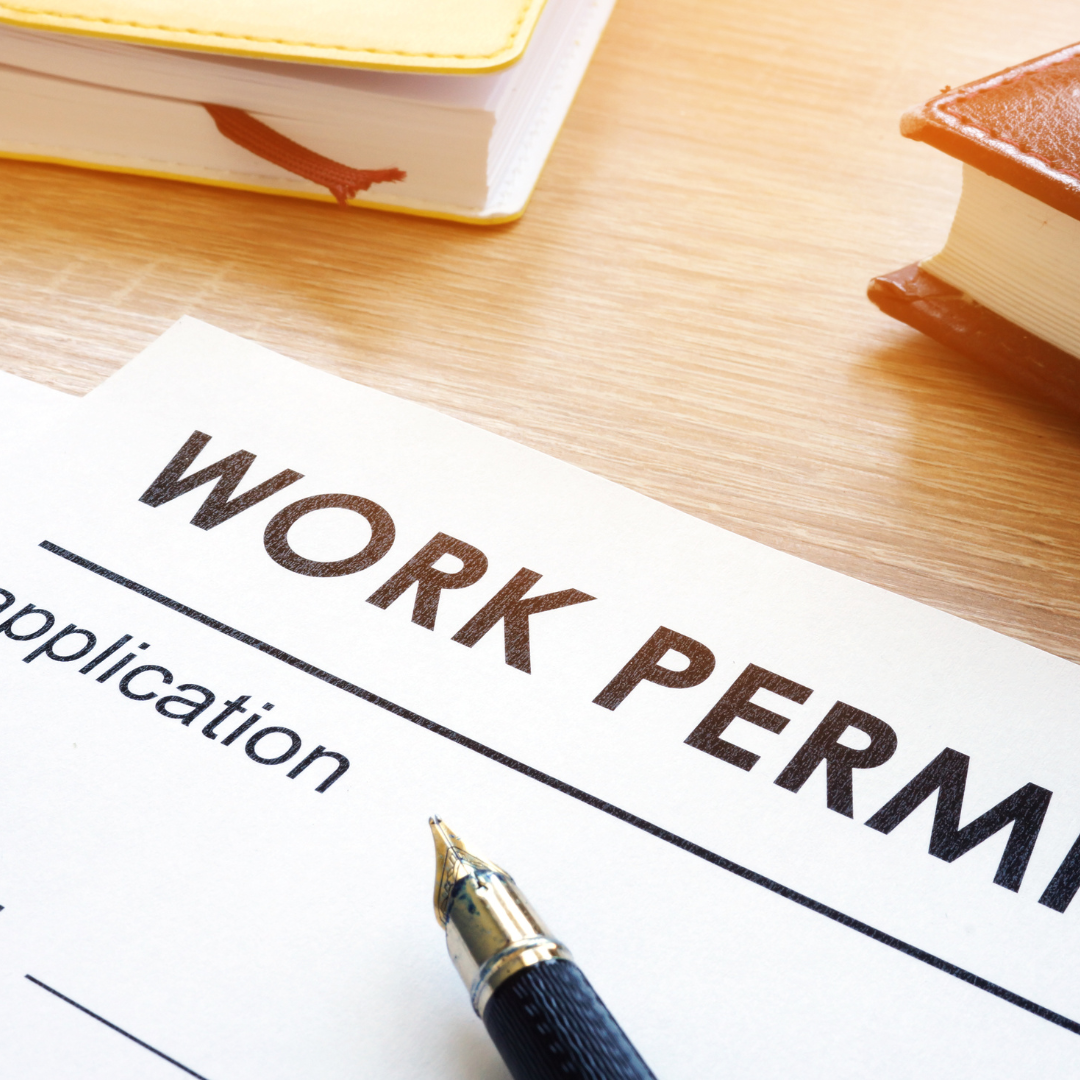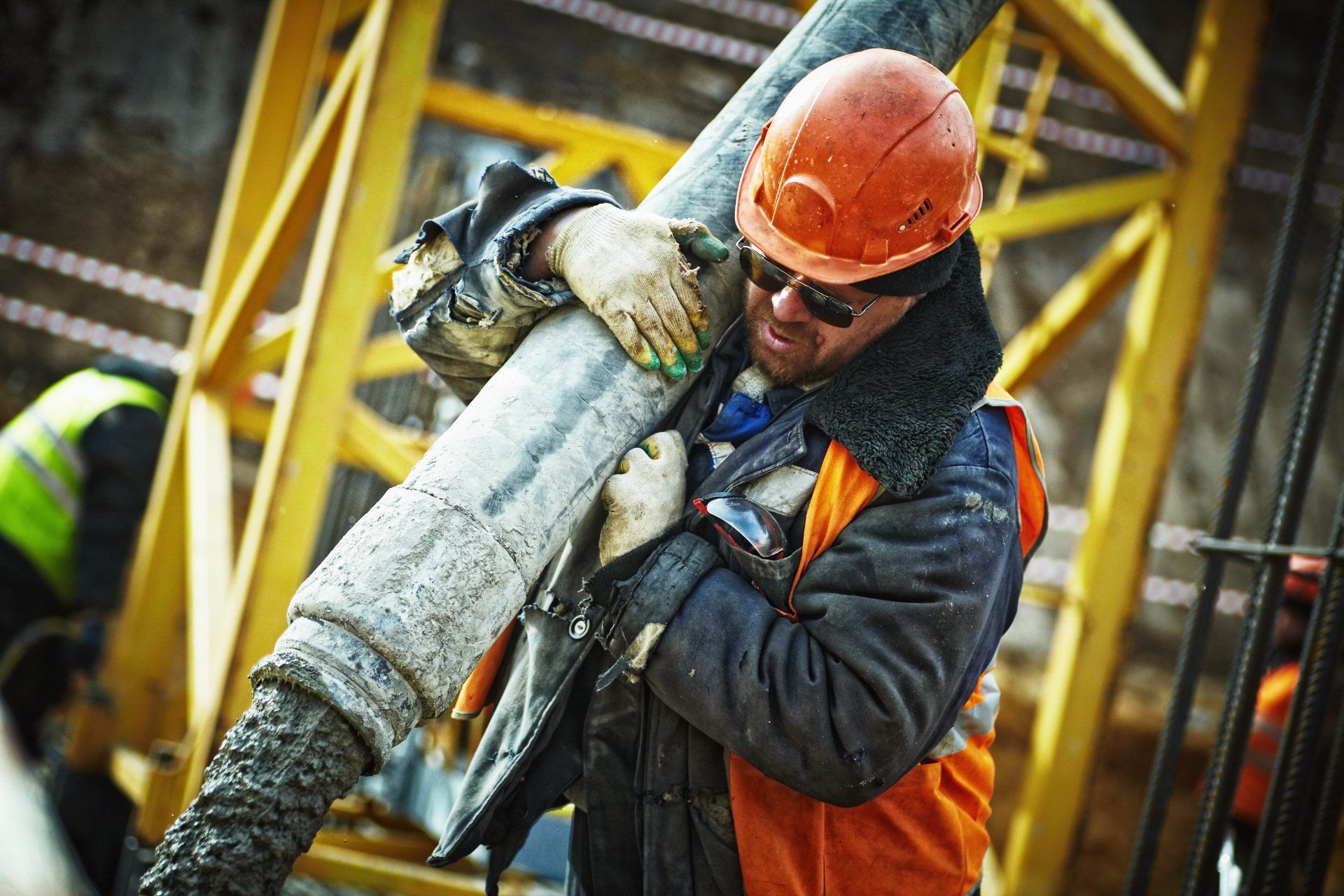Return to Work Safely Protocol
EMPLOYER UPDATE
Return to Work Safely Protocol
As we move towards the next phase in the Roadmap for re-opening the economy, the Government has drawn up a mandatory return to work protocol to facilitate a safe return to work.
The Return to Work Safely Protocol, incorporates current advice about measures to reduce the spread of COVID-19. As the advice issued by the National Public Health Emergency Team (NPHET) continues to evolve, it should be noted that this Protocol is subject to change. This Protocol is a general document applicable to all industry sectors and this Employer Update is a summary of the document issued on the 8th May. Employers and workers have a shared responsibility to implement the measures contained in the protocol in their place of work.
Communication and Training
• Every workplace will need to have at least one worker representative in place to address the COVID-19 requirements, who will be clearly identifiable and will receive the relevant and necessary training.
• This representative can be an existing safety person or be chosen by the employees
• Employers will have regular meetings with the worker representative(s) and will consult on safety measures to be implemented in the workplace.
• The employer should use an appointed occupational Safety and Health Officer or an external competent person to ensure the effective implementation of infection prevention and control measures in the workplace.
• Information and guidance should be provided to workers, about COVID-19, how it spreads, cleaning routines, waste disposal, hand and respiratory hygiene,
physical distancing, use of Personal Protection Equipment (PPE) and work equipment, where relevant.
• Employers will be required to provide COVID-19 induction training for all workers.
Identify and isolate workers who may have symptoms of COVID-19
The prompt identification and isolation of potentially infectious individuals is a crucial step in protection.
Employers must:
• keep a log of contacts/group work, to facilitate contact tracing.
• inform workers and others of the purpose of the log.
• display information on symptoms of COVID-19.
• provide up to date information on the Public Health advice issued by the HSE and Gov.ie. The worker representative(s)
should be involved in communicating this advice in the workplace.
• instruct everyone on steps to follow if they develop signs and symptoms of COVID-19.
Workers should:
• make themselves aware of the signs and symptoms of COVID-19 and monitor their own wellbeing.
• self-isolate at home and contact their GP promptly for further advice if they display any signs or symptoms.
• report to managers immediately if any symptoms develop whilst at work.
Workplace Changes or Policies
Employers should:
• communicate sick leave policies and amend as appropriate in line with normal procedures.
• agree through negotiation with workers/Trade Unions any temporary restructuring of work patterns required to implement prevention measures in the workplace, taking into account sectoral agreements in place.
Prevention and Control Measures
Pre-return form: At least three days before returning to work, a pre-return to work procedure and form (attached) should be put in place and completed by both employers and workers.
Employers must:
provide induction training for all workers which, at a minimum, includes: -
• the latest up to-date guidance:
• what a worker should do if they develop symptoms of COVID-19;
• details of how the workplace has been organised;
• an outline of the COVID-19 response plan;
• identification of worker and employer contacts;
• any other sector specific advice that is relevant;
• put in place controls identified in the risk assessment to prevent a spread of COVID-19;
• implement temperature testing in line with Public Health advice.
• identify the team(s) responsible for responding to a suspected case
• appoint an appropriate manager(s) for dealing with suspected cases.
• designate an isolation area and the route to the designated area, which should be easily accessible and as far as is reasonably practicable accessible by people with disabilities.
• plan for the possibility of one or more persons displaying signs and have additional isolation areas identified or a contingency plan for dealing with same.
• ensure the designated area can isolate the person behind a closed-door or be in an area away from other workers.
• provide as is reasonably practicable:
• Ventilation, i.e. via a window,
• Tissues, hand sanitiser, disinfectant
and/or wipes,
• PPE; gloves, masks,
• Clinical waste bag
When accompanying an individual to the designated isolation area:
• maintain social distancing of at least 2 metres from the symptomatic person at all times.
• provide a mask for the person presenting with symptoms
• assess whether the unwell individual can immediately be directed to go home and call their doctor and continue self-isolation at home.
• facilitate the person presenting with symptoms remaining in isolation if
necessary until they go home and/or facilitate them calling their doctor.
• the worker shall avoid touching people, surfaces and objects, cover their mouth and nose with the disposable tissue provided when they cough or sneeze and put the tissue in a waste bag.
• arrange non-public transport home or to hospital for medical assessment if necessary.
• carry out an assessment of the incident which will form part of determining follow-up actions and recovery.
• arrange for appropriate cleaning of the isolation area and work areas involved.
• provide advice and assistance if contacted by the HSE.
Workers will:
• complete and return the Pre-Return to Work form three days before they return to work.
• inform their employer if there are any other circumstances relating to COVID-19, not included in the form, which may need to be disclosed to allow their safe return to work.
• self-isolate at home and contact their GP promptly for further advice if they have any COVID-19 symptoms.
• stay out of work until all symptoms have cleared following self-isolation.
• participate in any induction training provided by the employer.
• complete any temperature testing as implemented by the employer and in line with Public Health advice.
Hand Hygiene
Employers must:
• ensure that appropriate hygiene facilities are in place to accommodate workers adhering to hand hygiene measures.
• make available advice and training on how to perform hand hygiene effectively:
• display posters on how to wash hands in appropriate locations.
Workers must:
• ensure they are familiar with and follow hand hygiene guidance and advice.
• wash their hands with soap and water or with an alcohol-based hand rub regularly and in particular: -
- after coughing and sneezing,
- before and after eating and preparing food,
- if in contact with someone who is
- displaying any symptoms,
- before and after being on public transport,
- before and after being in a crowd,
- when arriving and leaving the
workplace/other sites,
- before having a cigarette or vaping,
- when hands are dirty,
- after toilet use.
• avoid touching eyes, mouth, or nose.
• use the facilities to support hand hygiene (for example hand sanitiser/hand wipes/hand washing facilities).
• not share objects that touch their mouth, for example, bottles or cups.
• use own pens.
Respiratory Hygiene
Good respiratory hygiene and etiquette is also necessary.
Employers must:
• provide tissues as well as bins/bags for their disposal.
• empty bins at regular intervals.
• provide advice on good respiratory practice.
Workers must:
• adopt good respiratory hygiene and cough etiquette.
• ensure they are familiar with and follow respiratory hygiene guidance.
Physical Distancing
The current recommended distance to be maintained between people to minimise risk of transmission is 2 metres.
Employers must:
provide for physical distancing across all work activities and this may be achieved in a number of ways:
• implement a no hand shaking policy,
• where office work is essential, work must be organised in such a way that multiple occupancy of office premises is avoided and/or physical distances are maintained,
• organise workers into as small as is reasonably practicable teams who consistently work and take breaks together.
• organise breaks in such a way as to facilitate maintenance of physical distancing during breaks, stagger canteen use, extend serving times, reduce cash transactions
• reorganise and rearrange working and break areas.
• consider closing canteen facilities if public health measures including social distancing cannot be facilitated.
• allocate specific times for collections, appointments and deliverables,
• conduct meetings as much as possible using online remote means. If face to face meetings, the length and numbers attending should be kept to a minimum and maintain physical distancing at all times,
• provide one-way systems for access/egress routes in the workplace where practicable,
• adapt existing sign-in/sign-out measures and systems e.g. biometrics/turnstiles, to ensure that physical distancing can be maintained,
• ensure workers who share collective accommodation at a place of work are grouped in fixed teams that are as small as is reasonably practicable and consist of individuals who also work together.
• As far as is reasonably practicable,
each team should be provided with their own communal facilities (washrooms, kitchens and communal rooms). If this is not possible, employers should implement phased use and an enhanced cleaning regime.
• accommodation must be regularly cleaned and ventilated either manually (by opening windows and doors) or mechanically.
• sleeping accommodation should normally be occupied singly.
• additional rooms must be provided for early isolation of infected persons.
• prevent gatherings of workers in the workplace at the beginning and end of working hours.
• implement physical distancing during any outdoor work activity.
• for outdoor work activities, facilities for frequent hand hygiene should be provided and should be located close to where workers are working.
• install physical barriers, such as clear plastic sneeze guards between workers,
• maintain at least a distance of 1 metre or as much distance as is reasonably practicable,
• where 2 metre worker separation cannot be ensured by organisational means, alternative protective measures should be put in place,
• make face masks available to the worker in line with Public Health advice.
Working from Home;
Office work should continue to be carried out at home, where practicable and non-essential work.
The employer should develop and consult on any working from home policy in conjunction with workers and/or Trade Unions. Advice on working from home on a temporary basis is available
from the Health and Safety Authority.
At Risk/Vulnerable Workers
If an at risk or vulnerable worker cannot work from home and must be in the workplace, employers must make sure that they are preferentially supported to maintain a physical distance of 2 metres.
Business Travel, Contractors and Visitors
• Business trips and face-to-face interactions should be reduced to the absolute minimum.
• For necessary work-related trips, the use of the same vehicles by multiple workers is not encouraged. The number of workers who share a vehicle, simultaneously or consecutively, should be kept to a minimum as far is as reasonably practicable, for example by assigning a vehicle to a fixed team.
• Workers should be encouraged to travel alone or at a maximum be accompanied by one passenger who shall be seated in adherence with physical distancing guidance.
• Workers should be provided with hand sanitisers and cleaning equipment for their work vehicle.
• Workers, contractors or visitors visiting workplaces where there are restrictions should follow the site infection prevention and control measures
• a system for recording visits to the site(s) by workers/others as well as visits by workers to other workplaces should be put in place by employers and completed by workers as required.
• provide induction training for contractors and visitors to the workplace.
Cleaning
Cleaning of work areas must be conducted at regular intervals. Further information on cleaning in non-healthcare settings is available from the ECDC at:
https://www.ecdc.europa.eu/sites/default/files/documents/Environmental-persistence-of-SARS_CoV_2-virus-Options-for-cleaning2020-03-26_0.pdf
Employers must:
• implement regular cleaning of frequently touched surfaces. If disinfection is required it must be performed in addition to cleaning, never as a substitute for cleaning.
• ensure contact/touch surfaces such as tabletops, work equipment, door handles and handrails are visibly clean at all times and cleaned at least twice daily.
• implement modified cleaning intervals for rooms and work areas. Cleaning should be performed at least twice per day and whenever facilities are visibly dirty and provide workers with essential cleaning materials to keep their own workspace clean
• increase number of waste collection points and ensure these are emptied throughout and at the end of each day.
• modify use of hot desks to ensure that these are made available to identified staff and have appropriate cleaning materials in place to clean the area before using.
Personal Protective Equipment
Examples of PPE include gloves, goggles, respiratory protection. In the context of a COVID-19 risk, employers should check the HPSC website regularly for updates regarding use of recommended PPE.
• PPE must be selected based on the hazard to the worker.
• Employers must provide PPE and protective clothing to workers in accordance with identified COVID-19 exposure risks and in line with Public Health Advice.
• Workers should be trained in the proper use, cleaning, storing and disposal of PPE.
• Gloves are generally not required for infection prevention and control purposes. Where necessary, they are not a substitute for hand hygiene and hands must be cleaned whenever gloves are removed. Limitations on wearing time and workers’ individual susceptibilities (allergies, etc.) must also be considered.
• For particular PPE, such as respirators, these must be properly fitted and periodically refitted, as appropriate.
• PPE needs to be consistently and properly worn when required. In addition, it must be regularly inspected, cleaned, maintained, and replaced, as necessary.
Note: wearing of masks is not a substitute for other measures outlined above. However, if masks are worn, they should be clean, and they should not be shared or handled by other colleagues. Employers and workers should keep up to date with the latest Public Health advice issued regarding masks by Gov.ie/NPHET
Further information on PPE is available at: https://www.hsa.ie/eng/Topics/Personal_Protective_Equipment_-_PPE/.
Customer Facing Roles
Many of the measures noted above for workers can and should equally be applied for work activity that involves direct customer or visitor contacts.
Employers must:
• eliminate physical interaction between workers and customers as much as is reasonably practicable through revised working arrangements.
• provide hand sanitisers at entry/exit points.
• install physical barriers and clear markings to ensure contact between workers/ customers is kept to a minimum
• implement a cleaning regime to ensure contact points for workers / customers are kept visibly cleaned at all times.
• display the advice on the COVID-19 measures in visible locations to ensure that customers are also adhering to what is required.
Reporting Requirements:
COVID-19 is reportable under the Infectious Diseases (Amendment) Regulations 2020 by a medical practitioner, who becomes aware of or suspects an instance of such disease, not an employer. Such a report should be sent to the Health Protection Surveillance Centre(HPSC): https://www.hpsc.ie/notifiablediseases/
First Aid:
Workers acting as first aid responders should be provided with updated training on infection prevention and control principles when delivering first aid.
Further advice on first aid is available from the Pre-Hospital Emergency Care Council(PHECC):https://www.phecit.ie/PHECC/Publications_and_Resources/Newsletters/Newsletter_Items/2020/PHECC_COVID_19_Advisory_v1.aspx
Mental Health and Wellbeing:
• Employers should put in place support for workers who may be suffering from anxiety or stress. Workers, when they return to work, may have gone through traumatic events such as the serious illness or death of a relative or friend, or be experiencing financial difficulties or problems with their personal relationships.
• Workers who are returning to the workplace after a period of isolation are likely to have concerns about the risk of infection or changes to their job due to the implementation of measures to prevent the spread of COVID-19. Employers should provide workers with information on publicly available sources of support and advice and information about the prevention and control measures taken in the workplace to reduce the risk of infection.
• Employers should ensure workers are made aware of and have access to any Employee Assistance Programmes or
Occupational Health service provided by the Company.
Heating, ventilation, and air conditioning (HVAC):
Switching off air conditioning is not required to manage the risk of COVID-19. For organisations without air conditioning adequate ventilation is encouraged, for example, by opening windows where feasible etc.
Compliance
The Health and Safety Authority will be responsible for governing the compliance of this protocol. Inspectors may exercise their powers to conduct inspections at workplaces to assess compliance, reporting on the key findings and improvements required. Improvement Notices (legal instruction requiring improvement) can also be issued by the Inspector. Where a serious risk is identified, they may decide that it is necessary to shut down the workplace.
The full Return to Work Protocol is available at:
https://dbei.gov.ie/en/Publications/Publication-files/Return-to-Work-Safely-Protocol.pdf
To assist with the return to work, employers can find details of existing supports and resources in place for businesses impacted by COVID-19 at:
https://dbei.gov.ie/en/Publications/Supports-for-businesses-COVID-19.html.
Additional advice on dealing with a suspected case is available from the NSAI:
https://www.nsai.ie/images/uploads/general/NSAI-Guidelines-for-COVID-19-2020-04-09.pdf
https://www.hse.ie/eng/services/news/newsfeatures/covid19-updates/partner-resources/hand-hygiene-poster-english.pdf
This update is provided by the MSS HR Support Service
Further details on the update or about our services may be obtained from:
John Barry/Tara Daly/ Hugh Hegarty at: -Tel: 01 8870690 Email: info@mssirl.ie Website: www.mssirl.ie
New paragraph












